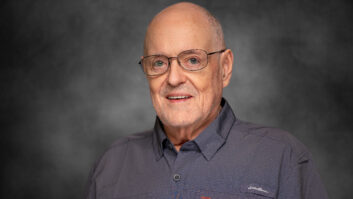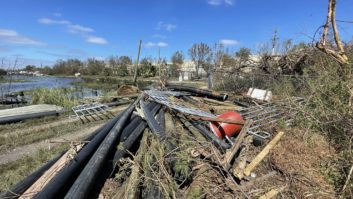
Fig. 1: WRMF’s signal measurement is seen in yellow, with green showing what has been predicted before signal correction.
(Click to Enlarge)
The industry first heard about ZoneCasting at the 2012 NAB Show. Radio World has been covering the developing story since, and a lot has happened over the past 11 months.
Most engineers are familiar with on-channel FM boosters and repeaters using Harris SynchroCast and other systems. ZoneCasting has evolved from that technology but is also able to geo-target areas inside a station’s coverage area with replacement commercial and other programming content.
Harris’s recently unveiled cousin, “MaxxCasting,” does not broadcast different content to the geo-targeted areas, but uses many of the same innovations and techniques.
GeoBroadcast Solutions invented ZoneCasting and has worked with Harris Broadcast to fine-tune optimal implementation of this technology. The expertise of NPR Labs has also been enlisted to assist in this effort.
We recently talked with the key players from GBS, Harris Broadcast and NPR Labs who are working to bring this innovation to market. Their plan includes more real-world testing and eventual FCC acceptance.
GeoBroadcast Chief Executive Officer Peter Handy and Chief Technology Officer Bill Hieatt answered our questions about their latest developments. Also participating in our email interview were Aaron Shainis of Shainis and Peltzman, legal counsel to GBS; John Kean, senior technologist of NPR Labs; and Rich Redmond, vice president of strategy and product management for transmission systems at Harris Broadcast.
Radio World Engineering Extra: The promise of ZoneCasting will deliver targeted over-the-air ads or messages with different content into segmented zones within the overall coverage area of a given radio station. Explain the advantages of this technique and what it potentially means for the overall radio industry.
Peter Handy, GBS: The advantages that the ZoneCasting technology will deliver to FM radio stations are, but are not limited to, the following: Commercial content will be more relevant to the listener. FM radio stations will have more inventory to sell while delivering the same amount of non-commercial content. Local retailers and advertisers will have the opportunity to be more efficient with their ad spend. FM station owners will have more potential advertisers by as much as two times their current customer base.

Fig. 2: Following the collection of field data, propagation parameters including diffraction factor, clutter heights and clutter absorptions are collected. This makes the measured vs. predicted correction a much more accurate model when matching the field data, and provides a highly accurate model for use in booster design and placement.
(Click to Enlarge)
The potential for the overall radio industry is exceptional. Stations that implement the ZoneCasting system could grow their top line revenue by 20 percent or more per year. Listeners may be more inclined to listen through a commercial if it is more local (relatable) in nature. FM stations may reverse the oversupply curve by creating more demand due to the increased number of customers and local advertisers may see an increase in the results produced by their radio ad schedules.
RWEE:The industry first heard about ZoneCasting at NAB 2012. Tell us in a nutshell how it works.
Rich Redmond, Harris: The successful use of synchronous on-channel boosters requires a combination of advanced technology for transmission of a signal and careful network design to ensure the desired area of coverage is achieved while at the same time mitigating any undesired interference to the primary station or others. The ZoneCasting family of solutions takes this technology to the next level to allow for the delivery of different localized content to specific geographic areas using a network of on channel boosters.
If we were to compare this to a lighting example, you might think of how you would light up a stadium for a night game — you ring the field with focused high-intensity lights focused on the field. All the energy is direct to the playing field; you are not trying to light up the parking lot. A traditional broadcast approach to lighting would be to put a high power omnidirectional light high above the field, as you end up lighting up the field plus everywhere else.
John Kean, NPR Labs: The system’s potential success depends most on a thorough understanding of synchronized repeater operation and its capabilities: Its operation relies on sound physical principles that are better optimized than previous on-channel designs.
RWEE:Engineers who have worked with boosters and repeaters know that terrain shielding is needed to make single-frequency networks work well. While ZoneCasting does not depend on terrain shielding, the areas where signal strengths of the on-channel transmitters are about equal will create interference or “mush zones.”ZoneCasting has developed some new and unique methods to reduce mush zone interference. One apparently involves reducing or muting the booster transmitter’s power during common programming periods. Please tell us a little about this.
Redmond: Boosters within the ZoneCasting network operate in a combination of full-time and part-time modes. Boosters that are full-time operation serve to both maximize coverage of the primary signal and support the localization of content. These full-time boosters carry the same content as the primary station most of the time, and then switch programming to the local content during segments of localization.
Other boosters only operate during the times of local content insertion to cover a certain area with the local content, and then turn off once that content is completed. This operation is interfaced with the station’s digital audio system and controlled by the GBS ZoneCaster issuing commands over the Harris Intraplex SynchroCast system, and is time-aligned along with the audio content typically over an IP network.
RWEE:What role do NPR Labs and John Kean play in this partnership?
Kean: NPR Labs has several roles with GeoBroadcast Solutions. The first is to determine the optimal parameters for ZoneCasting and MaxxCasting network design, including coverage design parameters for the network nodes. NPR Labs has extensive experience with signal propagation models, mapping and field verification, and is providing technical information on its own geographic mapping tools for designing a multimode network in all types of terrain.

Fig. 3: This is a basic overview of the signal path for WRMF’s ZoneCasting configuration, with all corresponding components. The same architecture applies to other potential deployments.
(Click to Enlarge)
An equally-important consideration is compatibility of the network with the primary transmitter signal, which shares within the station’s authorized service contour. The NPR Labs team has conducted carefully-designed listener tests to determine the threshold time-of-arrival and signal ratio parameters for the “mush zone” resulting from synchronous transmitter operation. The testing covered mobile and fixed FM reception, and included combinations of primary-to-node and node-to-node signal propagation.
A third role for NPR Labs is to integrate the performance and compatibility data into computerized models to optimize system designs. We use the ESRI ArcMap system for its versatility in building geo-mathematical models and its wide range of GIS data for mapping and demographic analysis. For each minute grid-point on the study map, our terrain-sensitive model considers the arrival of signals from multiple nodes as well as the primary transmitter to compute the reception quality. This system allows us to reliably predict where “mush zones” will occur and adjust the design for the best integration with the primary station’s signal, population served, etc.
NPR Labs has developed a calibrated FM signal measurement system for mobile field verification of signal coverage. Our fourth role will be to collect performance data and received audio from working systems and analyze it for system improvements. [See Figs. 1 and 2.] We may also conduct listener testing experiments to provide scientific verification of operating systems.
RWEE: ZoneCasting adapts the cellular telephone model of using low-power repeater transmitters that cover defined limited coverage areas. What power levels and antenna heights will be suitable for a typical large market that may want to deploy this?
Kean: The techniques developed for cellular telephone network site selection serve ZoneCasting and MaxxCasting networks, as well. Using moderate antenna height and power, many commercial rooftops and tower sites used in cellular industry are candidates for the nodes. Because of the number of nodes required, and because site selection requires interaction with the RF designer, “site acquisition” is handled by GBS’ real estate specialists as part of a turnkey implementation. This ensures that the optimal sites are selected efficiently and cost-effectively.
ZoneCasting and MaxxCasting network design varies with each station, depending on its environment and the station’s objectives for service. While the power, antenna height and site density can vary widely there are some general parameters for design. For example, network nodes should be easy to site, using existing commercial buildings and towers. Radiated power should be low enough to avoid restrictions for human exposure to RF, which, with moderate elevations tends to limit ERPs from 500 to 5000 watts.

Fig. 4: This graphic shows the FCC-defined service contour for WRMF. It is a graphical representation of where the ZoneCasting tests will happen in southern Florida.
(Click to Enlarge)
Using highly directive antennas, GBS is able to use sites with only standard mains power and minimal equipment space. Antenna heights are typically only 25 to 40 meters above ground, to control the coverage of each node and avoid spilling signal across distant nodes or into areas to be served by the primary transmitter. GBS is developing an antenna with much higher front-to-back ratio than currently-available models as a tool for efficient designs.
Node-to-node spacing may range from one to five kilometers, depending on terrain and building density. Although the area of a network “zone” is almost unlimited, a typical zone serving a community may require from five to 20 nodes.
RWEE: How will ZoneCasting networked transmitters be linked together and fed with both common and different programming?
Redmond: The Harris SynchroCast system used in the ZoneCasting solution has the flexibility to work over a variety of networks. In North America T1 circuits (similar to E1 circuits in the rest of the world) have been the most popular for building single-frequency FM network connectivity. Recently Harris has introduced SynchroCast3 to support the use of IP networks. All of these network types can be used over wired or wireless networks to allow for the maximum flexibility in system design.
RWEE: How will the different program content intended for specific zones be inserted and conveyed to their respective transmitters?
Redmond: The content for both full-time and part-time boosters will originate at the studio and be distributed over the SynchroCast network. Content targeted for full-time boosters in an area of localization will switch from a simulcast of the main transmitter to locally targeted content. The part-time boosters will only be sent content during the periods of local content insertion. [See Fig. 3.]

Fig. 5: This map shows a sample of a drive test to show data of the measured RF signal. This represents the southern portion of the market where the initial tests will happen.
(Click to Enlarge)
The control of timing is a critical factor in any SFN network of boosters. Over time many have attempted to use a variety of fixed delays to adjust the network for proper time alignment, only to find that changes in the link, either wired over a public network, or wireless over a microwave, vary in actual operation, turning the once aligned network into a series of transmitters causing interference.
Only the Harris SynchroCast system supports real-time adaptive delay to ensure the critical SFN calibration is not affected by changes in performance of the network. Transmitters and the studio location are all referenced to GPS. This reference both time-stamps the audio and control signals carried on the SynchroCast system, as well as the frequency of the transmitters, pilot and pilot phase of the integrated stereo generator. By using the GPS reference, we can be certain that all the transmitters operate on the exact same frequency along with the stereo generator located at each transmitter site, a critical first step for a successful booster.
The second use of the GPS reference is to power the real-time adaptive delay. The important part of delay control is to align the time the audio arrives at a listener’s receiver in an area of overlap between transmitters with the same content. The delay of each transmitter is different based on location, terrain, building density and total time it takes the audio to travel from the studio to the farthest transmitter site. Proprietary software is used to calculate the exact delay required for each transmitter in the network to optimize overage. Once installed, the system is adjusted based on field measurements to dial in system performance.
RWEE: A ZoneCasting announcement last spring indicated that system testing had been conducted in Utah and that additional testing would be done during the summer in Sebring, Fla.Tell us more about the results of those tests.
Bill Hieatt, GBS: The two tests conducted represented two different ends of the variety of conditions that we anticipate for ZoneCasting implementations.
Our initial tests in the Salt Lake City region consisted of four zones, each covered by an autonomous booster. This FM broadcast region had already been in place for a reasonably long time and interference between the zones had been minimized through the use of terrain shielding as well as Intraplex SynchroCast synchronization. We found that it was not necessary to modify any RF broadcast parameters, at any booster site, to implement and test the ZoneCasting concept.
Conversely, the system in Sebring, Fla., was built from the ground up as no boosters or zones initially existed. And because terrain shielding was not available, it was obviously more difficult in terms of engineering and implementation. It became invaluable with respect to developing our simulation models and understanding what we needed going forward in such an environment.
In both tests, we initiated the engineering design based on published standards for synchronized audio in SFNs such as those from the ITU, but in Sebring, we found we needed to make our own modifications. The design includes typical RF engineering parameters such as radiated power, antenna array azimuths, downtilt and simulcast differential time delays. By using considerable field data measurements we optimized the mathematical modeling of our computer simulations. We were then able to “predict and move” our transition areas (from the main coverage to the ZoneCasting zone) to areas with little population or automobile traffic.
Once we were comfortable with our modeling of the ZoneCasting System, we were subsequently able to experiment with different techniques such as switching to monophonic transmission during a ZoneCasting advertising spot.
During the tests we found it important to use an FCC-approved calibrated receiver with a calibrated antenna and GPS receiver to log the audio samples. The transition area that exists between the ZoneCasting region and the main broadcast transmission area appears as multipath noise to the FM receiver. Most car audio manufacturers will compensate for channel conditions such as multipath fading by reducing stereo separation and/or changing the audio processing, and it was important not to be biased by any particular FM car receiver. This subsequently prompted us to fund truly pioneering additional research that has been conducted by NPR Labs.
The most difficult challenge that we faced in terms of implementation was the distribution of the localized audio content to the ZoneCasting boosters. Because we send linear uncompressed audio to each booster, QOS issues such as delay and jitter are crucial, and very close cooperation with the WiMAX service providers was required. Although versed in Quality of Service requirements due to their other user’s applications, such as VoIP and gaming, careful examination of the audio distribution should be done. Depending on the area, a permanent installation may be better suited using licensed RF or copper/fiber connectivity.

Fig. 6: This map highlights the total coverage area of the ZoneCasting trials for WRMF, covering the Miami, Fort Lauderdale and West Palm Beach areas.
(Click to Enlarge)
RWEE: Your recent press release identifies WRMF(FM), Palm Beach Broadcasters in West Palm Beach as the next station that will install ZoneCasting for more extensive testing early in 2013. Can you share the details of that effort and partnership?
Handy: The proposed partnership with Palm Beach Broadcasters in West Palm Beach is currently in the design phase for a network for WRMF(FM). The system we are designing is somewhat complicated, as the zone we are looking to cover is relatively large. WRMF may be one of the best stations in the state of Florida and it certainly has one of the best signals. The design we are working on has been modified several times, and we believe the latest schematic will accomplish the needs of our client. If we are correct, we would hope to begin the build out of this network within the next six weeks. [See Figs. 4, 5 and 6.]
RWEE: How many zones will be needed and at what power levels to achieve the WRMF coverage objectives?
Handy:Our first buildout for WRMF will be one zone, which covers a portion of Broward County. Ultimately, WRMF will have ZoneCasting coverage of all of Broward County. However, this in all likelihood will be a two-step process. The first zone will have approximately 30 transmitter sites with each transmitter site broadcasting at power levels of less than 1,000 watts. The multi-site low power design creates minimal interference while at the same time delivering signal coverage that not only covers the listening area, but does so with a cleaner signal than what the listener currently gets from the main transmission site. In other words, the station will now have the ability to run geo-targeted content, delivering more relatable content and will be doing so with better audio quality.
RWEE: ZoneCasting deployment will require special FCC approval, rules modification and licensing. What is the status of the petition with the FCC to allow booster stations to transmit programming that is different from the main channel?
Aaron Shainis, GBS: Shainis & Peltzman, Chartered is the principle regulator counsel to GeoBroadcast Solutions. At present time, ZoneCasting has requested pursuant to a rulemaking filed with the FCC to make a minor modification to the FCC’s rules to allow origination of programming on booster stations. That rule making has been pending for about six months, which is not unusual.
It is anticipated that a Notice of Rule Making will be issued sometime during the first half of 2013. That notice will seek comment from the public on the proposal, but it is generally thought that the matters contained in the petition are not controversial, so adverse comments are unlikely. The preliminary comments files shortly after the request for rulemaking was filed were supportive.
With respect to the experimental authorizations for the WRMF tests, the engineering for the applications for the boosters are currently being finalized. The applications for permanent booster facilities will be filed and those are generally granted within two months. Once they have been granted, built and licensed, the commission will entertain the request for experimental authorization. Our experience in obtaining other experimental authorizations relative to ZoneCasting is they generally are granted within a matter of weeks after filing. I believe that WRMF will be treated no differently.
RWEE: Broadcasters interested in ZoneCasting are all wondering what the ball-park costs of adding this enhancement to their markets might be, on a per installed booster site basis.
Redmond: There are three major areas of costs associated with the ZoneCasting system.
The first is the licensing and network design costs. Part of the key to the success of ZoneCasting is the use of special planning tools to create a targeted zone of transmitters to cover a certain area while at the same time minimizing any impact to other zones or the main signal. These costs are variable depending on the number of zones a station wants to target, and the number of sites needed to cover the zone. These costs are part of an upfront licensing fee that will vary by market size. In addition there is a small revenue share associated with the use of the GBS patented technology, which is similar to an agency commission for the incremental revenue the systems generates.
The second portion of costs is related to the distribution of audio to the various sites, and the actual transmitters and antennas needed. While these too vary based on the power needed at each site, a basic site of equipment is about $39–55K plus installation. There would also be some equipment needed for the studio location, and is similar in cost to that of the transmitter site.
The third area of cost is the ongoing tower rental, data circuit charges and electricity needed to run the sites. The costs here are related to the number of sites and the part of the country you operate in, but as these are low tower sites they are typically in the hundreds of dollars per month range.
Tom McGinley is a longtime radio broadcast engineer and technical adviser to Radio World.
Comment on this or any other story to [email protected].












